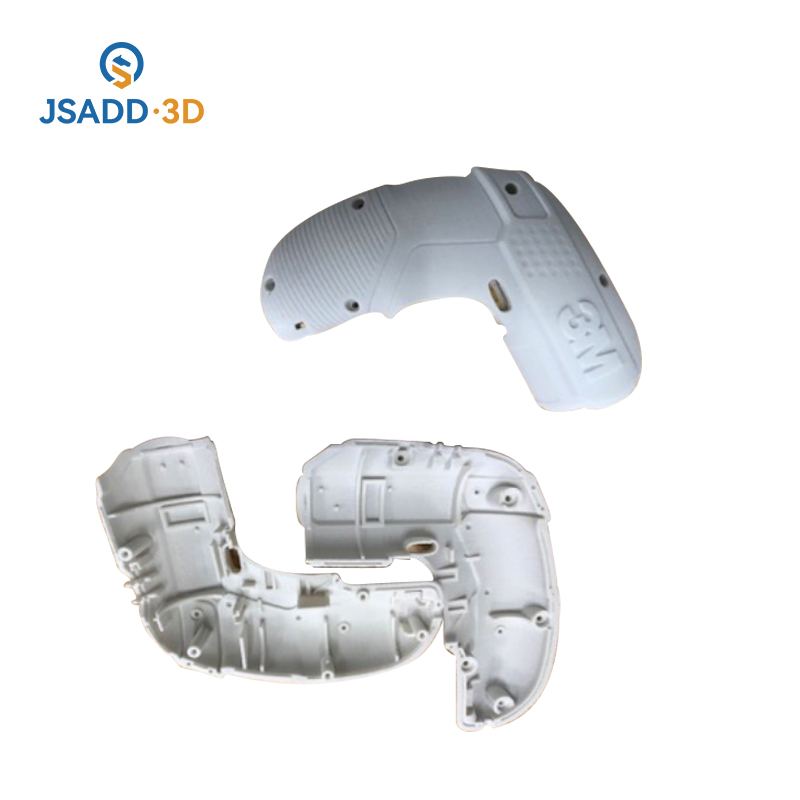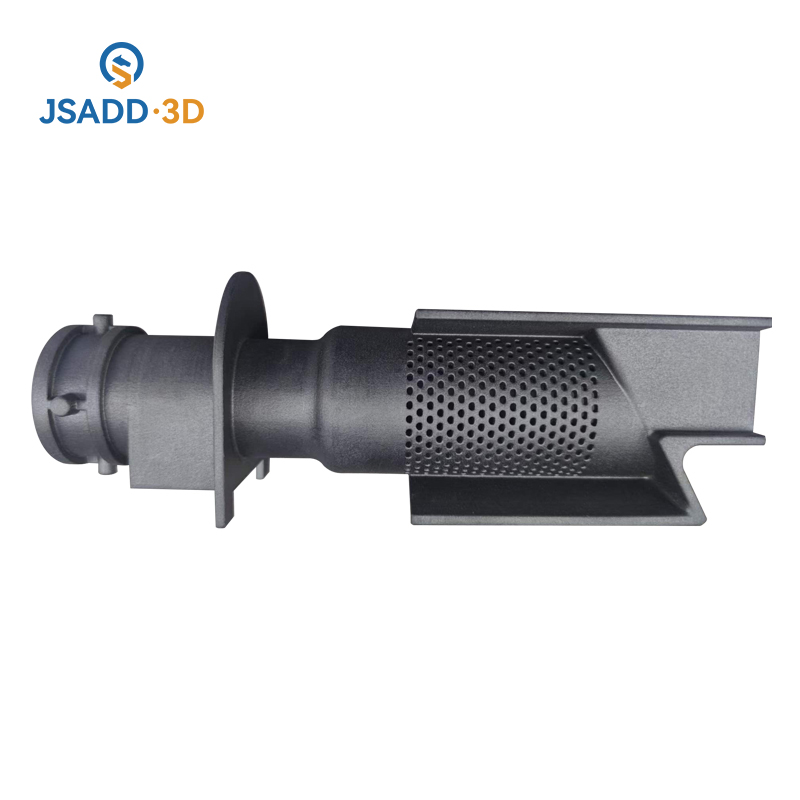SLS Nylon and glass fiber are both excellent materials in their own right, and their composite materials combine their strengths. The strength and rigidity are much higher than those of unreinforced nylon powder, excellent mechanical properties, small high temperature creep, significantly improved thermal stability, good dimensional accuracy, wear resistance, coloring performance, etc., excellent comprehensive performance, and high light weight Tough, easy to process. The scope of application at home and abroad almost entirely includes aerospace, consumer electronics, automobile manufacturing, machinery industry, applied sports equipment, stationery, and other national economy fields.

Automobile manufacturing
Glass fiber reinforced nylon composite materials are widely used in the automotive industry, mainly because of the excellent oil, abrasion resistance and creep resistance of the above materials, which have the advantage of light weight when replacing traditional metal materials. A variety of engineering plastics, including PA12, are being reinforced by glass fiber and are gradually replacing earlier metal die-casting components for automobiles, such as fuel tanks. In the United States, Western Europe and Japan, nylon is used in almost all parts of the car, such as engine, electrical and body parts. Glass fiber reinforced nylon composite materials have strong fatigue resistance, which makes them used in the manufacture of synchronous drive gears for automotive internal combustion engines. German heavy-duty diesel engines use this material to make gears, pipe joints and other parts.
Defense Industry
Indiana-based Wikon-Fiberfil has developed a 40% glass fiber pa66 composite material, NylamM1501, whose performance exceeds that of other high-strength materials currently in use. This material can replace metal and is mainly used in defense and aerospace applications. The US MX missile uses UAV% glass fiber reinforced PA66 instead of aluminum alloy to make missile engine components. Most of the barrels of the rocket launchers developed by the British company Hunting are made of glass fiber reinforced nylon, and the two-section type launchers are made by the long fiber winding method, and the arrow cartridges are also made of the above-mentioned materials.
Aerospace
The twin-engine small business jet developed by Beechcraft Aircraft Company of the United States uses glass fiber reinforced, epoxy, and nylon materials for 70% of the main wing, canard, stabilizer, and nacelle. The new material is lighter than traditional aluminum. 19%, which is extremely beneficial for increasing speed and saving fuel. INP USA uses glass-reinforced PA12 to make some of the components on the engines of the Boeing 757. They injection molded engine air window parts with dimensions of 20.32*30.48cm and thickness of 0.0381cm from PA12 with 40% glass fiber addition, and the effective service life is more than 20 years, and it has good economy and long-term performance. Currently, Boeing is using it to manufacture nacelles for civilian aircraft.
4. Stationery
Osaka of Japan plans to use reactive injection to produce nylon, long glass fiber composites to meet the requirements of producing literature and sports goods. The specific approach is: first use nylon monomer to mix with the pre-placed continuous fiber, inject molding, and then initiate polymerization to make it shape. This method is suitable for the manufacture of thin-walled products. The company plans to use it to make tennis rackets and golf clubs, as well as helmets, car bumpers and robotic arms.

5. Consumer Electronics
Domestic glass fiber reinforced nylon materials have also developed rapidly in recent years. For example, the glass reinforced nylon 12 Premicid 1172 PROGF30 material newly released by TPM 3d Yingpu Technology in January 2018 has high strength, high mechanical properties, nylon mixed with 30% glass fiber, Features of high toughness, heat deformation resistance and high reusability. It has obvious advantages for applications such as structural parts, impellers, fans, wear-resistant assemblies and snap-fit parts.
At present, JSADD 3D also has glass fiber nylon printing materials with the model number PA12+GB, which is ideal for stiff and functional parts, to meet the printing needs of more customers.
Contributor:Sammi / Lili Lu / Seazon






